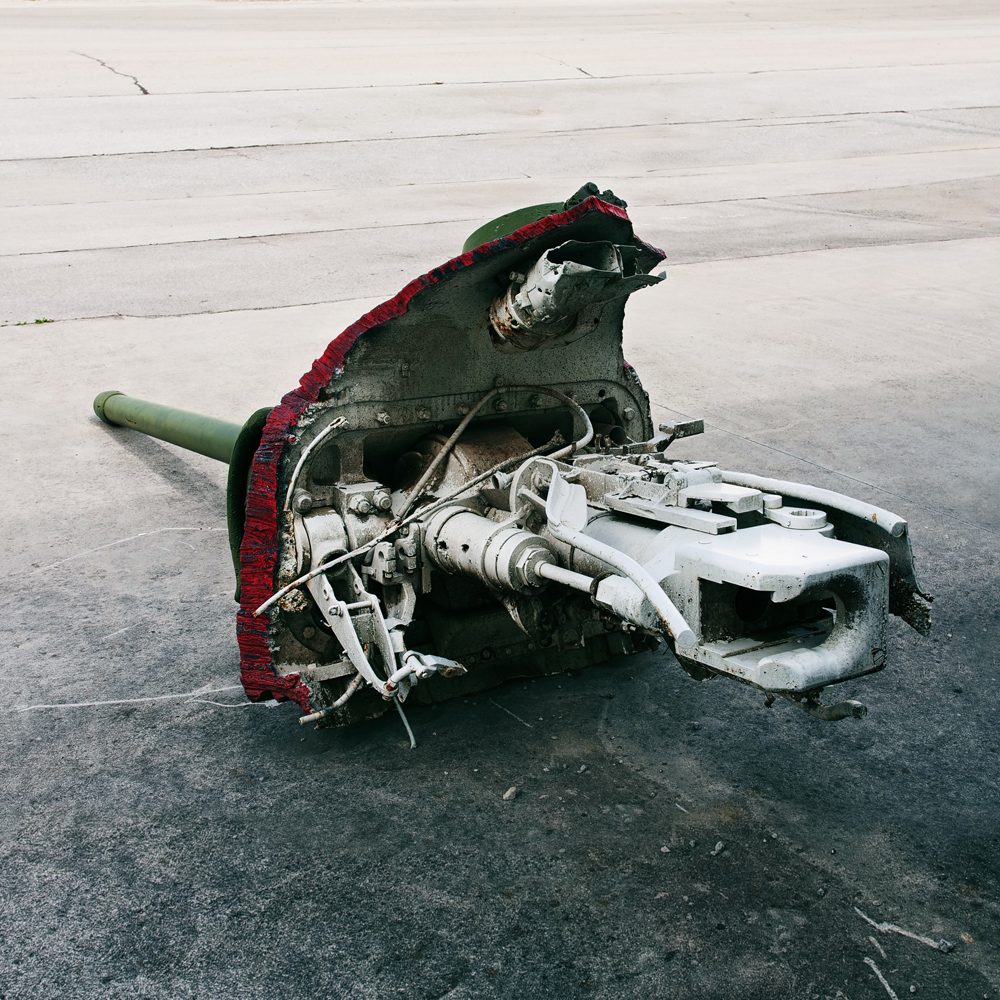Type: Heavy Tank
Nation: Germany
Period: World War 2
Location: December 44 Museum, La Gleize, Belgium

Heavyweights
The German Tiger II (also known as Tiger Ausf. B) was the heaviest mass-produced turreted tank of World War 2. Weighing over 69 metric tons, its operational combat weight was only surpassed by its derivative, the Jagdtiger tank destroyer. The first of only 489 completed Tiger IIs left the factories in January 1944. Its predecessor, the infamous Tiger, had merely been in production for about two years.

Never good enough
Hitler had personally demanded that the crown jewel of his armoured forces was to be equipped with a more powerful main gun, but any existing design was too large for its chassis. The much lighter Panther‘s 7.5 cm L/71 gun had proved to be just as powerful as the Tiger‘s 8.8 cm L/56, so for the new Tiger II a longer version of the „Eighty-Eight“ with a barrel length of 71 calibres was chosen.

Royalty
The Tiger II‘s design greatly benefitted from the experiences with the Panther‘s sloping armour, which offered greater protection at the same weight. In fact the two German tanks looked so much alike that when the Western Allies first encountered the new Tiger, soldiers would initially call it the „Pantiger“. However the most popular nickname was going to be „King Tiger“ or “Königstiger”.

Protection problems
The Tiger B‘s glacis plate was 150 mm thick and withstood most enemy guns at normal combat ranges. But at this late stage of the war the quality of German armour plate steel had noticably deteriorated, so in practice its effectiveness was somehow diminished. And of course no armour is completely impenetrable: The Sherman Firefly, M36 Jackson and the Soviet IS-2 and ISU-152 all posed a serious threat against the King Tiger.

Gas guzzler
As the Tiger B‘s 12-cylinder Maybach HL 230 petrol engine had practically been borrowed from the Tiger I (which was twelve tons lighter), mobility was the heavy tank‘s biggest drawback. Not only was its powertrain constantly overstrained, this engine also required vast amounts of fuels which the Germans simply no longer had at their disposal.

Nazis on the run
During the Battle of the Bulge this particular vehicle with the turret number 213 was a platoon command tank with the notorious SS-Kampfgruppe Peiper, who had just brutally massacred 77 American prisoners near the town of Malmedy. When tanks of the US 3rd Armored Division counterattacked the German troops at La Gleize, one of their shells blew off the Tiger‘s gun barrel. Like many other vehicles the disabled tank was left behind when the Germans were forced to withdraw on foot on Christmas Eve 1944.

An extraordinary purchase
In July 1945, when the remnants of the war were about to be cleaned up, a local lady bought the tank from the Americans for the fair price of one (!) bottle of Cognac. The vehicle was moved to the town square, later restored (including a Panther‘s muzzle brake) and today it resides next to the excellent December 44 Museum.


5 responses to “Panzerkampfwagen VI Tiger Ausf. B (Sd.Kfz. 182)”
[…] The 57-ton Tiger was designed as a breakthrough tank to be deployed in separate heavy tank battalions under army command. With its thick armour and 8.8 cm L/56 gun, it was at no point intended to replace the medium Panzer III and Panzer IV in the regular Panzer Divisions. The Tiger was an extraordinarily complex and expensive machine which cost about 300,000 Reichsmark to build. By comparison: A late-war Panzer IV could be produced for little over 115,000 and a Panther went for 144,000. Because Tiger I was a relatively conservative design with vertical armour on all sides and not much potential for upgrades – for example the longer 8.8cm L/71 gun – only about 1,350 were completed between 1942 and 1944, when production eventually switched to the Tiger II. […]
LikeLike
[…] would be produced until the end of the war, compared with 1,350 Tigers Is and less than 500 Tiger IIs. The frequent encounters with Panthers in Normandy were so costly and frustrating that by July 1944 […]
LikeLike
[…] When the Tiger appeared on the battlefield in 1942, it represented a whole new level in terms of firepower, armour protection and weight. Despite its 57 metric tons it was fairly mobile – thanks to its 700 hp V12 Maybach engine. On even ground it could actually go faster than a Sherman, which was fielded at around the same time and weighed only about half as much. Unlike the standard WW2 German medium tanks Panzer III, Panzer IV and Panther, the Tiger was designed as a heavy breakthrough tank with thick armour on all sides. It was a very expensive and complicated machine to produce and after only about two years of production and 1,350 completed units the Tiger was replaced by the even larger Tiger II. […]
LikeLike
[…] to succeed the archaic ARL 44. The first of only five prototypes was visibly inspired by the German Tiger II and carried a 90 (later 100) mm […]
LikeLike
[…] IS-3 had been designed during World War 2 to withstand the Tiger II’s 88 mm gun at combat distance, but it came too late to see any action in Europe. The first […]
LikeLike